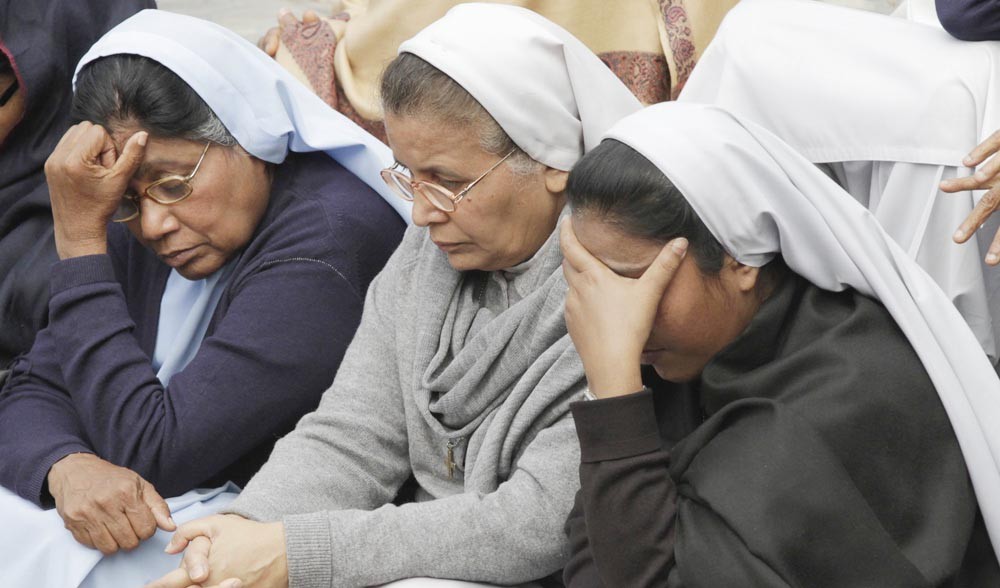
The media overwhelmed with the moment failed to see the big picture

Following the twin suicide blasts at Catholic and Christ Churches in Youhanabad area during the Sunday mass service, enraged residents belonging to the attacked local Christian community lynched and burnt alive two male suspects believed to be behind the gruesome episode.
In an abrupt turn of events, the Pakistani media’s attention turned to the impassioned act of vigilante justice -- images of mob violence, thus overpowering visuals of Christian men and women gathered outside the Lahore General Hospital, searching for the bodies of their loved ones.
The next morning’s papers were dominated by images of the charred bodies of the two men mutilated in a crowd of dozens after the attack. Before condemning the incident which claimed the lives of 17 Christians and badly wounded nearly 70 persons, the Interior Minister Chaudhry Nisar promised to pursue the vigilantes responsible for the act and bring them to book. Meanwhile, the Taliban were spared of the word ‘heinous’ as ‘condemnable’ proved sufficient.
Without referencing the context of the act and decades of structural and violent discrimination endured by the minority community, Pakistan’s vibrant electronic media blared images of rioting in Youhanabad.
From youngsters raiding markets to stone pelting of police vehicles, anyone watching the coverage of the aftermath of Sunday’s blasts could safely make an equation between elements wishing to overthrow the State and angry protesters flaunting lawlessness.
After all, those affected by the blasts and the sense of deprivation felt in Shahbaz Sharif’s constituency PP-159 should have taken the lead from their Hazara brethren? Dug mass graves, held a peaceful sit-in, and returned for their homes after getting assurances of security from those in power.
Undoubtedly, it is both irresponsible and insensitive journalism to show scenes of looting lacking any thorough analysis or substantiation. Those calling out lawlessness and bloodlust on TV channels perhaps forgot Shantinagar in 1997, Sangla Hill in 2005, Gojra in 2009, Joseph Colony in 2013, and most recently, the mass lynching of a young Christian couple in Kot Radha Kishan on drummed up charges of blasphemy last year. In all these mentioned incidents of extreme brutality, the attacked communities of Pakistani Christians chose to observe peaceful means of protest.
Hidden in the media coverage of the rioting in Youhanabad are the voices of grievance and a deep disillusionment with the establishment. "We are taking to the streets as peaceful means of protest have failed to register any impact on the government, and culprits of hate crimes against us continue to enjoy impunity and patronage from the State," a rioting fifty year old Christian employee of Punjab government, Maqbool Bhatti, recorded his anger.
Also read: A grim day and after
People who live in situations like this do not have easy choices. They certainly do not simply take instructions from a handful of aggravated youngsters waving batons and clubs to confront authorities. Their decisions on what ways to adopt take into account a whole host of considerations: history, the nature of repression, urgency of the situation, and quite crucially, the environment in which their struggle is taking place.
The decision of whether to be a Gandhian as the majority would have it, or to be violent and break the law is not always a moral or ideological one. Quite often it’s a tactical one. For Gandhian sit-ins and hunger strikes to be effective in achieving their demands, it needs a sympathetic audience which the economically and politically marginalised minority communities of Pakistan do not have.
Had there not been a breakdown of law and order, the media would not have covered the protests with equal magnitude?
After one act of reprehensible mob violence in 68 agonising years of systemic discrimination, an entire community is being branded as violent. A media which is ignorant of history and has a thirst for ratings is sadly complicit in this endeavour.